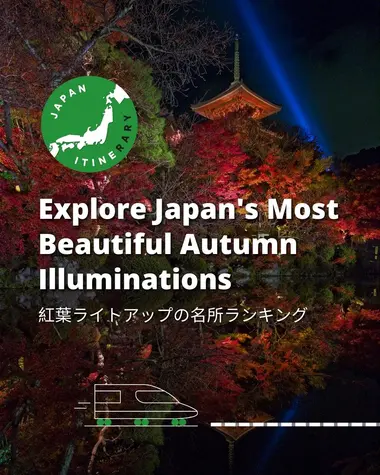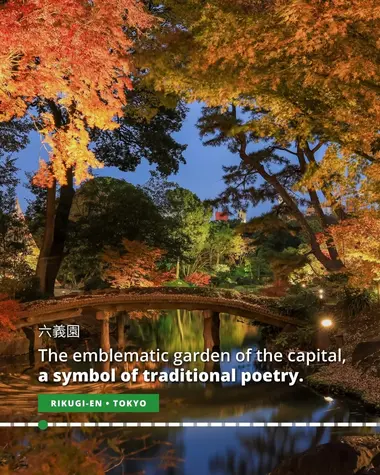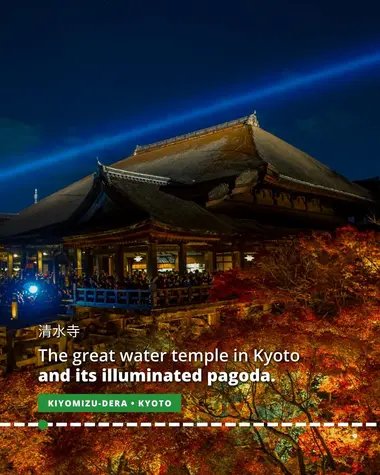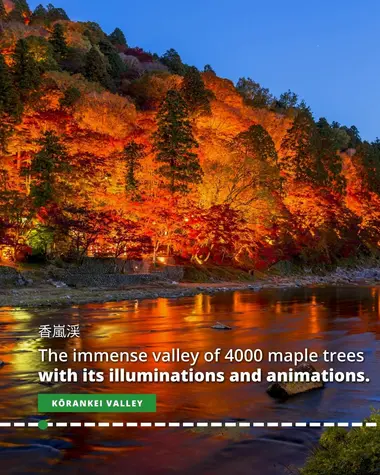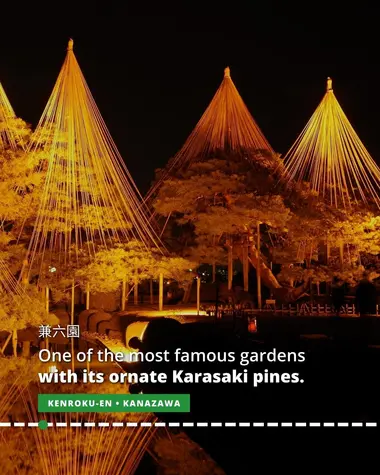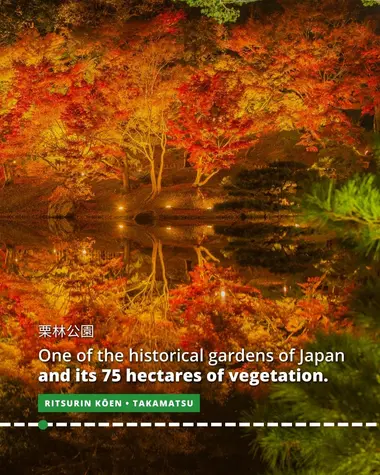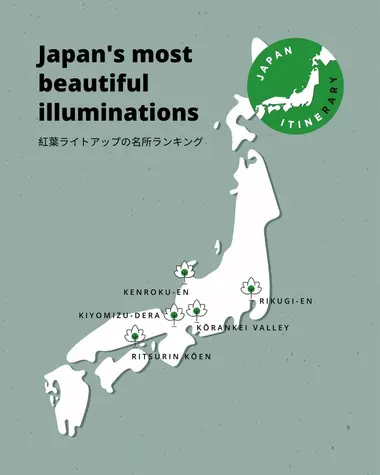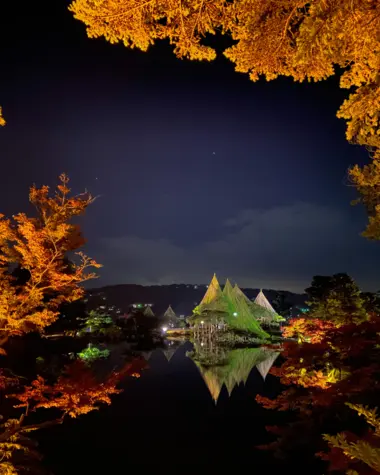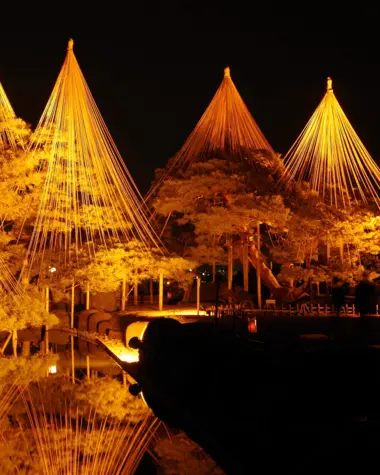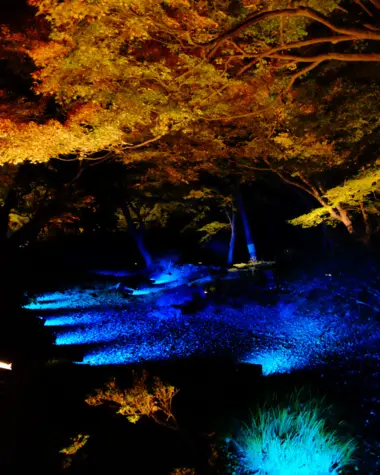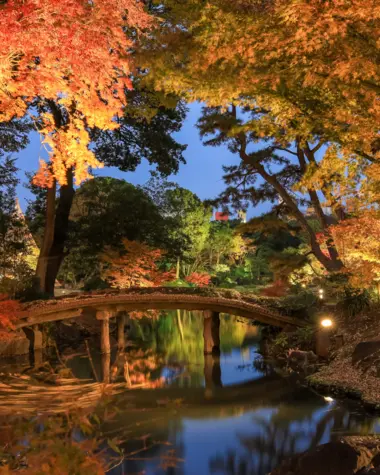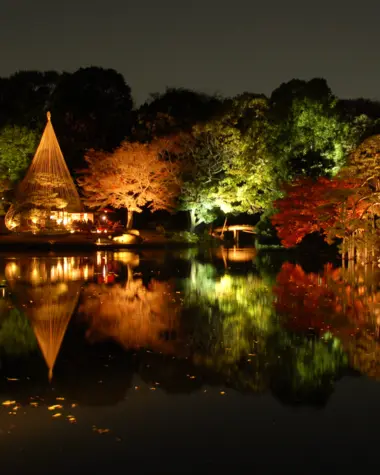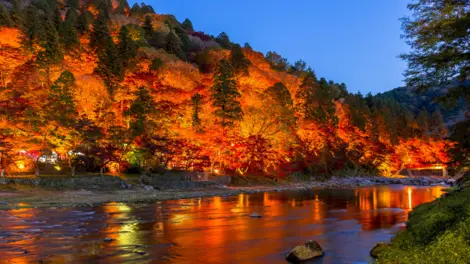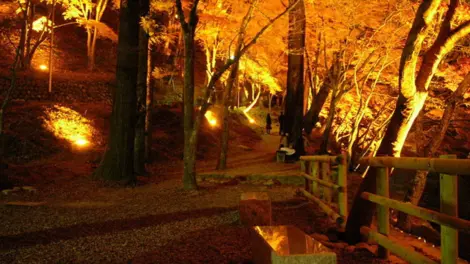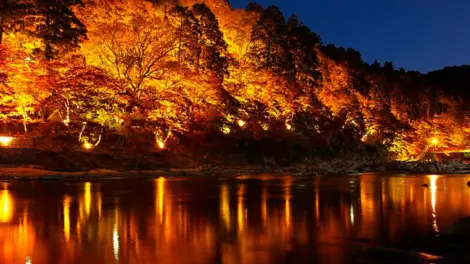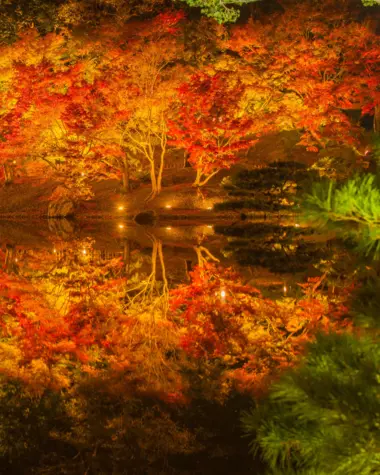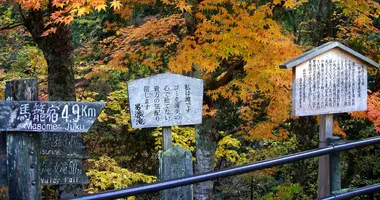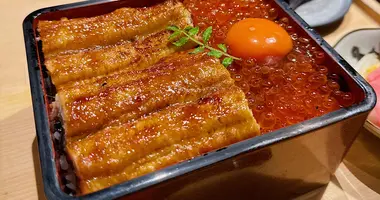Top 5 of the most beautiful autumn illuminations in Japan
- Published on : 03/06/2024
- by : Japan Experience
- Youtube
The most beautiful places to admire autumn illuminations
Very popular in Japan, autumnal illuminations arrive at the same time as the Koyo and embellish the moment when the leaves turn red. They are often set up to celebrate the change of season and to appreciate the new colors of the leaves across the country.
Discover our 5 favorite places to enjoy the exceptional autumn illuminations in Japan!
Kiyomizu-dera, the great water temple in Kyoto
Kiyomizu-dera temple is a very old temple (1,200 years) and its architecture attracts a lot of visitors. It is in autumn that the temple is most popular: its location and its high platform make it possible to admire the leaves which now vary between orange and bright red. Discover the Otowa-no-taki waterfall below. According to the legend, drinking water from its three canals would lead to health, success, and long life!
To celebrate the new season, illuminations are organized from November 18 to 30, until 9:30 p.m. (the ticket office closes at 9 p.m.)! Temple, pagoda, and surrounding garden will be illuminated…come and discover this nocturnal autumn atmosphere!
Kenroku-en: the most beautiful garden in Kanazawa
Kanazawa hosts one of the most famous gardens in Japan: the Kenroku-en. With nearly 8,200 trees in 10,074 hectares of land, it is a natural area worth visiting! The garden is even more remarkable when the autumn season brings its bright shades and illuminations.
From the beginning of November, the Karasaki Matsu pines are ornamented with yukitsuri, ropes that protect these ancestral trees before the arrival of winter. To remain in the theme, the yukitsuri are also illuminated until the end of winter.
A show to discover from October 4 to December 7, 2024.
Admission price: 300 yen ($2.31) for adults and 100 yen ($0.77) for children aged 6 to 17. Admission is free for seniors and children under 6 years old.
The Rikugi-en in Tokyo, the garden of a thousand lights
The emblematic garden of the Japanese capital, the Rikugi-en is the symbol of traditional poetry. Arranged in such a way as to respect the principle of harmony of nature praised by waka poetry, it is made up of water points, hills, and vegetation…ideal for walking while contemplating the surroundings.
During the leaf color change in the fall, Rikugi-en Garden attracts a lot of people. From late November to early December 4, discover the illuminations that highlight the reddening of the leaves in the garden. Illuminations from 6 p.m. to 8:30 p.m. The last entry is at 8 p.m.
Good to know: this year, tickets must be purchased in advance (1000 yen - $7.70).
Korankei Valley in Aichi
It is in the prefecture of Aichi, in Toyota, that we find the immense valley of Korankei.
Composed of more than 4,000 maple trees whose leaves take on a color alternating between orange and bright red in the fall, this valley attracts both locals and tourists. During this period, illuminations celebrating the change of seasons are installed throughout the valley. As soon as night falls, admire the reflection of the play of lights and the beautiful fall colors on the Tomoe River! To the rhythm of concerts and traditional performances, taste the local specialties offered by the yatai installed for the occasion.
The illuminations take place from November 1 to 30, between sunset and 9 p.m. Access is free for everyone!
Ritsurin Koen, a traditional garden in Takamatsu
A historical garden of Japan, the Ritsurin Koen was built in the 17th century. Initially made up of a single pond, it was landscaped for more than a century by successive generations of the daimyo of the Matsudaira clan…to become one of the most beautiful gardens in the country. And for good reason! 75 hectares of greenery, with beautiful red and orange colors during the autumn period. The Ritsurin Koen garden is a natural environment in which illuminations are set up from the end of November until December.
The park and its illuminations are accessible between 5 p.m. and 9 p.m. (last entry at 8:30 p.m.) at the price of 410 yen ($3.16) for adults and 190 yen (€1.46) for children!

